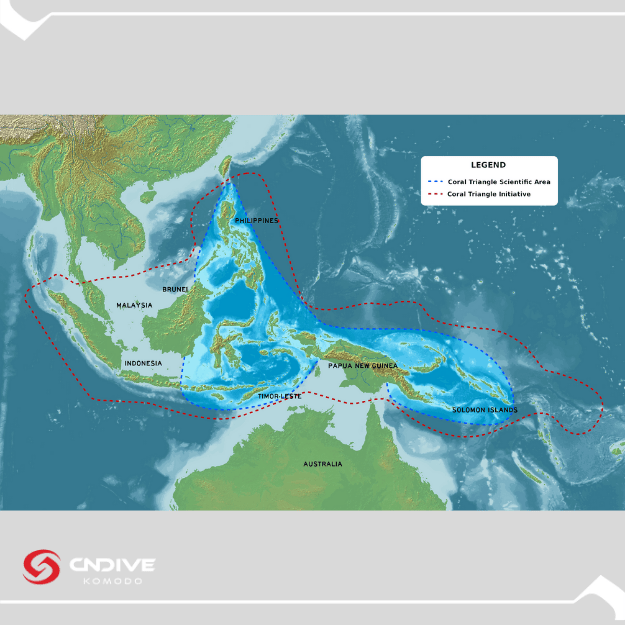
Whatsapp:
+6282138677490
Email: cndivekomodo2@gmail.com
Address:
GV7G+6XP, Jl. Reklamasi Pantai, Labuan Bajo. Kecamatan Komodo, Kab. Manggarai Barat. NTT
Privacy policy
Terms and conditions

Diving Komodo Island : An Unforgettable Scuba Adventure

Diving Komodo Island – is often hailed as one of the world’s most spectacular underwater experiences. Nestled within the Komodo National Park, a UNESCO World Heritage site in Indonesia, this marine paradise offers an extraordinary blend of biodiversity, challenging currents, and breathtaking underwater landscapes. For holiday escapades seekers and seasoned divers alike, the allure of Komodo Island lies not just in its stunning reefs but also in the unique adventure of exploring this vibrant ecosystem.
This article delves into the key factors impacting diving at Komodo Island, including the tradeoffs involved, challenges faced, and the importance of sustainable decision-making for an unforgettable scuba diving holiday in Labuan Bajo.
Komodo Island sits within the Coral Triangle, a region known as the epicenter of marine biodiversity. The waters here host over 1,000 species of fish, 260 species of reef-building coral, and iconic marine creatures such as manta rays, reef sharks, and even the elusive mola mola (sunfish). Dive sites like Batu Bolong, Manta Point, and Castle Rock are world-renowned for their vibrant corals, schools of fish, and dramatic underwater topography.
The marine diversity ensures that each dive is unique. Whether drifting along walls adorned with colorful corals or encountering a school of barracuda, divers are consistently captivated by the sheer abundance of life.
The underwater landscapes of Komodo Island feature steep walls, pinnacles, and underwater plateaus. These dramatic formations create perfect habitats for various marine species. However, the area is also known for its strong currents, which demand advanced diving skills. While these currents bring nutrients that sustain the rich ecosystem, they can present challenges for less experienced divers.
Labuan Bajo, a small town on Flores Island, serves as the gateway to Komodo National Park. Travelers often choose between liveaboard boats and day trips, depending on their diving goals and budget. The dry season, from April to November, is considered the best time for diving, offering clear skies and optimal visibility. However, the shoulder seasons of March and December can also provide excellent conditions with fewer crowds.
Choosing the right time and mode of exploration involves balancing priorities such as weather, diver comfort, and the desire to experience the area without excessive human presence.
Komodo’s strong currents can challenge divers, especially at sites like Castle Rock and Crystal Rock. These locations require divers to have solid buoyancy control and experience with drift diving. Dive operators in Labuan Bajo often assess the skills of divers before heading out, and those new to the area may benefit from hiring private guides or enrolling in advanced training.
While the adventurous nature of Komodo diving is part of its appeal, safety is paramount. Investing time in skill development and heeding local dive guides’ advice ensures a rewarding and secure experience.
As Komodo Island grows in popularity, the impact of human activity on the marine environment has become a critical concern. Overcrowding at popular dive sites, improper anchoring, and waste management issues can harm fragile ecosystems. Sustainable tourism practices—such as using eco-certified dive operators, respecting marine life, and adhering to “leave no trace” principles—play a vital role in preserving the park’s beauty for future generations.
A key decision for divers is choosing between a liveaboard and a land-based stay. Liveaboards allow access to remote dive sites and offer a more immersive experience, often including sunrise and night dives. They are ideal for advanced divers seeking to explore the park’s full range. However, they tend to be costlier and require a longer time commitment.
Day trips from Labuan Bajo offer flexibility, making them appealing for those on a tighter schedule or budget. However, they may limit the number of dive sites explored due to travel times between locations. Balancing these options depends on individual priorities, such as budget, time, and desired level of immersion.
While Komodo’s underwater world is a major draw, the region offers other attractions, such as hiking trails, scenic viewpoints, and the famous Komodo dragons. Divers may need to weigh their desire for rigorous underwater adventures against opportunities to explore the terrestrial wonders of Komodo National Park.
Komodo’s currents can be unpredictable, ranging from mild drifts to surging flows. These conditions enhance the ecosystem but require divers to be vigilant. Dive operators often plan dives around tidal changes and provide detailed briefings to ensure safety. Learning to read current patterns and using proper equipment, such as reef hooks, can help divers navigate these challenges effectively.
The growing popularity of Komodo Island as a diving destination has led to overcrowding at some sites. This issue not only affects the diving experience but also poses risks to the environment. Collaborative efforts between local authorities, dive operators, and visitors are essential to maintain sustainable tourism levels. Strategies such as rotating dive sites, implementing visitor caps, and raising awareness about eco-friendly practices can help mitigate these impacts.
Encounters with marine creatures are a highlight of diving at Komodo Island. However, ensuring these interactions are ethical and non-disruptive is crucial. Divers are advised to maintain a respectful distance from wildlife, avoid touching corals, and use reef-safe sunscreen. By prioritizing conservation, divers can help preserve the pristine conditions of Komodo’s reefs.
The importance of sustainability cannot be overstated when diving in ecologically sensitive areas like Komodo National Park. Here are some actionable ways to minimize environmental impact while maximizing enjoyment:
By adopting these practices, holidaymakers can contribute to the long-term health of Komodo’s marine environment while enjoying its unparalleled beauty.
Diving Komodo Island – is a transformative experience that offers unparalleled encounters with marine biodiversity and breathtaking underwater landscapes. However, this privilege comes with the responsibility of ensuring the park remains a thriving ecosystem.
For holiday escapades seekers planning a scuba diving trip to Labuan Bajo, careful consideration of factors such as skill level, seasonal conditions, and environmental impact is essential. By balancing adventure with sustainability, divers can enjoy the magic of Komodo Island while contributing to its preservation.
Whether drifting alongside majestic manta rays or marveling at the kaleidoscope of coral reefs, Komodo Island promises an unforgettable journey beneath the waves. With thoughtful planning and respect for its fragile ecosystems, this diving paradise can continue to enchant divers for generations to come.

Whatsapp:
+6282138677490
Email: cndivekomodo2@gmail.com
Address:
GV7G+6XP, Jl. Reklamasi Pantai, Labuan Bajo. Kecamatan Komodo, Kab. Manggarai Barat. NTT
Privacy policy
Terms and conditions